May 16, 2025 | 13:46 GMT +7
May 16, 2025 | 13:46 GMT +7
Hotline: 0913.378.918
May 16, 2025 | 13:46 GMT +7
Hotline: 0913.378.918
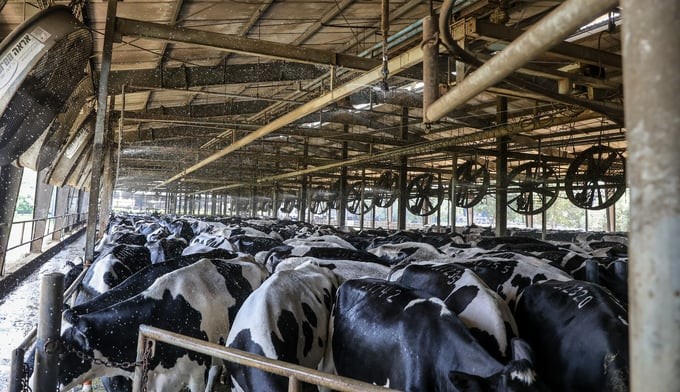
TH's dairy farm ensures a centralized scale and has a waste treatment system. Photo: PT.
According to statistics from the Food and Agriculture Organization of the United Nations (FAO) in the Report "Path to Lower Emissions" published at COP28, in 2015, agricultural and livestock production systems emitted about 6.2 billion tons of CO2/year, equal to 12% of total human-made emissions. Without intervention and increased productivity and production efficiency, meeting increased demand is likely to push global livestock emissions to approximately 9.1 billion tons of CO2 equivalent (CO2e) by 2050.
Of which, pig farming is estimated to account for 14% of emissions from production activities in the livestock industry, chickens for 9%, buffaloes and cows for 8%, and small ruminants for 7%. In terms of products, meat production accounts for two-thirds of emissions, milk for 30%, and eggs for the rest.
According to information from the Ministry of Agriculture and Rural Development, greenhouse gas (GHG) emissions from livestock include two main sources: methane from the rumen of ruminants and CH4 and N2O gases from animal manure. Survey results in 2016 show that the amount of greenhouse gases emitted from the rumen of ruminants accounts for the highest proportion of 444,000 tons of CH4 (equivalent to 12.42 million tons of CO2e). Following are emissions from animal manure, with 11,000 tons of N2O (equivalent to 2.97 million tons of CO2e) and 112,000 tons of CH4 (equivalent to 3.13 million tons of CO2e).
On October 10, 2022, the Ministry of Natural Resources and Environment issued Decision No. 2626/QD-BTNMT, announcing the list of emission factors for greenhouse gas inventory. Accordingly, among animals that emit methane gas from the rumen, dairy cows emit the most, about 78kg of CH4/head/year, followed by buffaloes of about 76kg of CH4/head/year, beef cattle of 54kg of CH4/head/year, horses of 18kg of CH4/head/year, goats and sheep of 5kg of CH4/head/year, and pigs of 1kg of CH4/head/year.
However, due to the large amount of beef cattle and buffalo farming in Vietnam, the annual methane emissions from beef cattle are up to 250,000 tons/year, followed by buffalo with 138,000 tons/year and dairy cows with about 20,000 tons/year.
For pig farming, one pig emits about 4.84 kg of CO2e/kg of meat. If the average weight of pigs for slaughter is 90kg, one pig emits about 438kg of CO2e when it meets slaughter standards. Normally, a household will produce at least two batches of pigs a year, so a farming household with an average scale of 3,000 pigs will emit approximately 3,000 tons of CO2e/year.
According to Ms. Nguyen Quynh Hoa, Head of the Science Technology, Environment, and International Cooperation Division (Department of Livestock Production, Ministry of Agriculture and Rural Development), industrial livestock farming is one of the sources of environmental pollution and is contributing significantly to Vietnam's total GHG emissions.
Inventory results show that GHG emissions from cow and pig farming always account for the largest portion of the industry's total GHG emissions. Methane emissions from animal manure are caused by anaerobic conditions in biogas tunnels or in places where animal manure is stored in large quantities but with poor ventilation conditions. Therefore, the largest methane emissions often occur for animals with concentrated farming and using a lot of water to clean barns, such as market hog farming.
In the recent National Greenhouse Gas Inventory Report, GHG emissions from the livestock industry have tended to increase over the years. Specifically, in 2016, GHG emissions from the livestock industry were 18.5 million tons of CO2e, estimated to increase to approximately 22.2 million tons of CO2e in 2018 and over 30.84 million tons of CO2e in 2020.
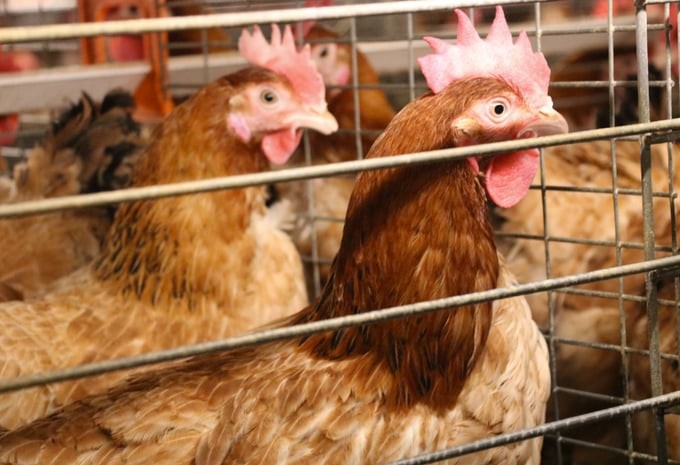
Chicken farming is estimated to account for 9% of emissions from production activities in the livestock industry. Photo: PT.
Analyzing the livestock industry's contribution towards Vietnam's climate goals, Ms. Nguyen Quynh Hoa said that livestock farming currently contributes to 26.7% of the entire agriculture sector's GDP. However, the livestock industry also poses many challenges to environmental protection and emissions, with over 60 million tons of solid waste produced each year, causing great pressure in many localities.
To both ensure economic development and limit environmental impact, many solutions have shown practical effectiveness, such as applying energy recovery technology, organic fertilizer models, and circular farms with emission reduction.
It is estimated that on average each year, the main types of livestock (buffalo, cow, pig, and poultry) emit more than 60 million tons of manure and over 289 million m3 of wastewater. If not controlled well, this will be an annual source of about 30 million tons of CO2 equivalent emissions.
After commitments at COP26, the Government of Vietnam has extremely complete legal documents, including the Law on Animal Husbandry and decrees and circulars. Particularly, the Prime Minister also signed and approved the Livestock Development Strategy for the period 2021–2030, with a vision for 2045.
The project "Developing the barn industry and treating livestock waste" is one of the strategy's five key projects. The project requires localities to focus on implementing and opening up new directions for livestock development towards a circular economy, ensuring efficiency, quickly overcoming environmental pollution, reducing emissions, and transforming green energy. Thereby contributing to the formation of low-emission agriculture to achieve the Government's goal of net zero emissions by 2050," Ms. Nguyen Quynh Hoa emphasized.
According to Vietnam's nationally determined contribution, the potential for emission reduction measures related to the livestock industry in the period 2021–2030 is 152.5 million tons of CO2e, accounting for 54% of the total potential for emission reduction in the agriculture sector.

It is essential to require large-scale livestock facilities to conduct greenhouse gas inventory. Photo: PT.
Looking from the experience of reducing GHG emissions in countries with advanced livestock industries such as China, the US, Japan, Thailand, etc., the Head of the Science Technology, Environment, and International Cooperation Division, Department of Livestock Production, believes that the GHG management and reporting requirements of developed and developing countries always require the participation of industrial and agricultural facilities in reporting periods.
This is a requirement of the greenhouse gas inventory process according to the IPCC’s guidelines, in which the livestock industry accounts for a fairly large proportion of total national GHG emissions.
Large livestock facilities are required to provide data or prepare inventory reports depending on each country's management method and data management system for GHG emissions.
Once there are GHG emission inventory reports, businesses will be aware of opportunities to reduce emissions right in their production process (for example, improving energy use efficiency, managing livestock waste to make compost, and recovering biogas to burn for electricity generation in order to partly meet the electricity needs of livestock facilities).
Currently, a number of countries around the world have been developing carbon projects for the livestock sector. For example, China, India, and Thailand have developed and successfully registered carbon credit projects for livestock facilities in these countries. This can be an extremely good opportunity for Vietnamese businesses to develop emission reduction projects to increase revenue for businesses and aim for sustainable development, thereby contributing to the country's emission reduction goals.
During the 2010–2016 period, the Department of Livestock Production presided over the development of a carbon credit project under the Gold Standard mechanism, a project to support livestock households in installing biogas recovery systems to serve as a fuel source for production and daily life. According to information from the credit mechanism, over the life of the project, more than 3 million carbon credits have been issued and traded (https://registry.goldstandard.org/projects/details/61).
According to a study by Harvard University, the global livestock industry will reduce emissions by 61% by 2036 to meet the Paris Agreement's goal of limiting global warming. This requires global livestock emissions to peak by 2030 or sooner. Therefore, the livestock industry globally, both in developed and developing countries, is increasing GHG emission controls and measures to reduce GHG emissions.
“On that basis, for the livestock industry, it is recommended that Vietnam apply the management of GHG emission data of livestock facilities based on calculations and operational data of the Ministry of Agriculture and Rural Development. Of which, it is essential to require large-scale livestock facilities to conduct greenhouse gas inventory, and the Animal Husbandry Association of Vietnam is supporting this initiative. This is also the method of managing large livestock facilities in Thailand and Indonesia," Ms. Nguyen Quynh Hoa proposed.
Translated by Huyen Vu Thu

(VAN) Vietnam's draft amendment to Decree No. 156 proposes a mechanism for medicinal herb farming under forest canopies, linking economic development to population retention and the sustainable protection and development of forests.
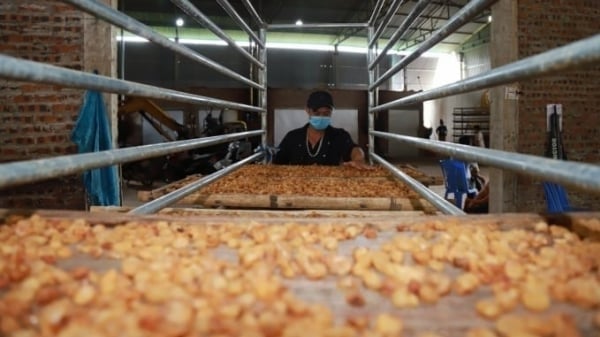
(VAN) In reality, many craft village models combined with tourism in Son La have proven effective, bringing significant economic benefits to rural communities.

(VAN) The international conference titled Carbon Market: International experiences and recommendations for Vietnam was successfully held recently in Ho Chi Minh City.
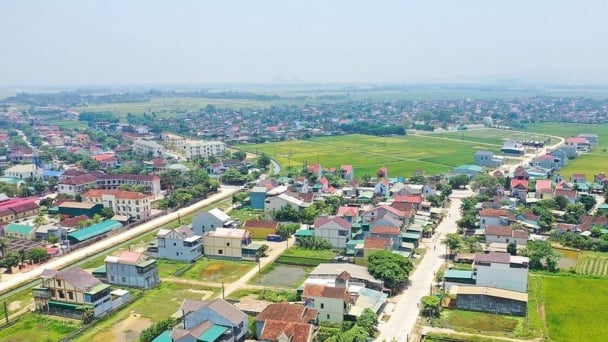
(VAN) According to the Project on rearranging provincial and communal administrative units, in 2025, the country will have 34 provinces/cities, 3,321 communes, wards, and special zones, and no district-level organization.
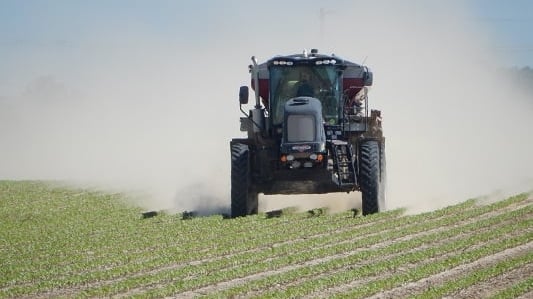
(VAN) The vice president of fertilizer with Stone X Group says the Trump administration’s tariffs are impacting fertilizer markets.
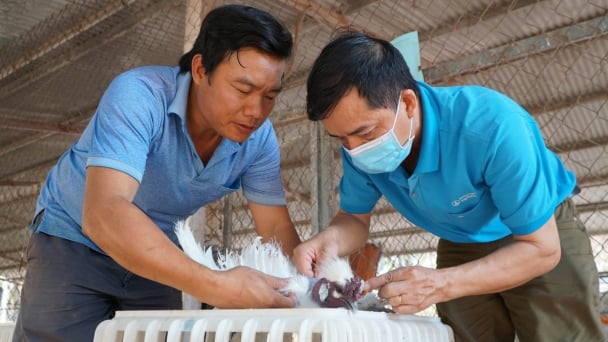
(VAN) Resolution 57 offers Vietnam a significant opportunity to narrow the global genetic technology disparity and convert its extensive genetic resources into commercial advantages.

(VAN) The Ministry of Agriculture and Environment will prioritize the implementation of five core and breakthrough solutions in science and technology, in addition to the seven groups of tasks identified in Decision No. 503.